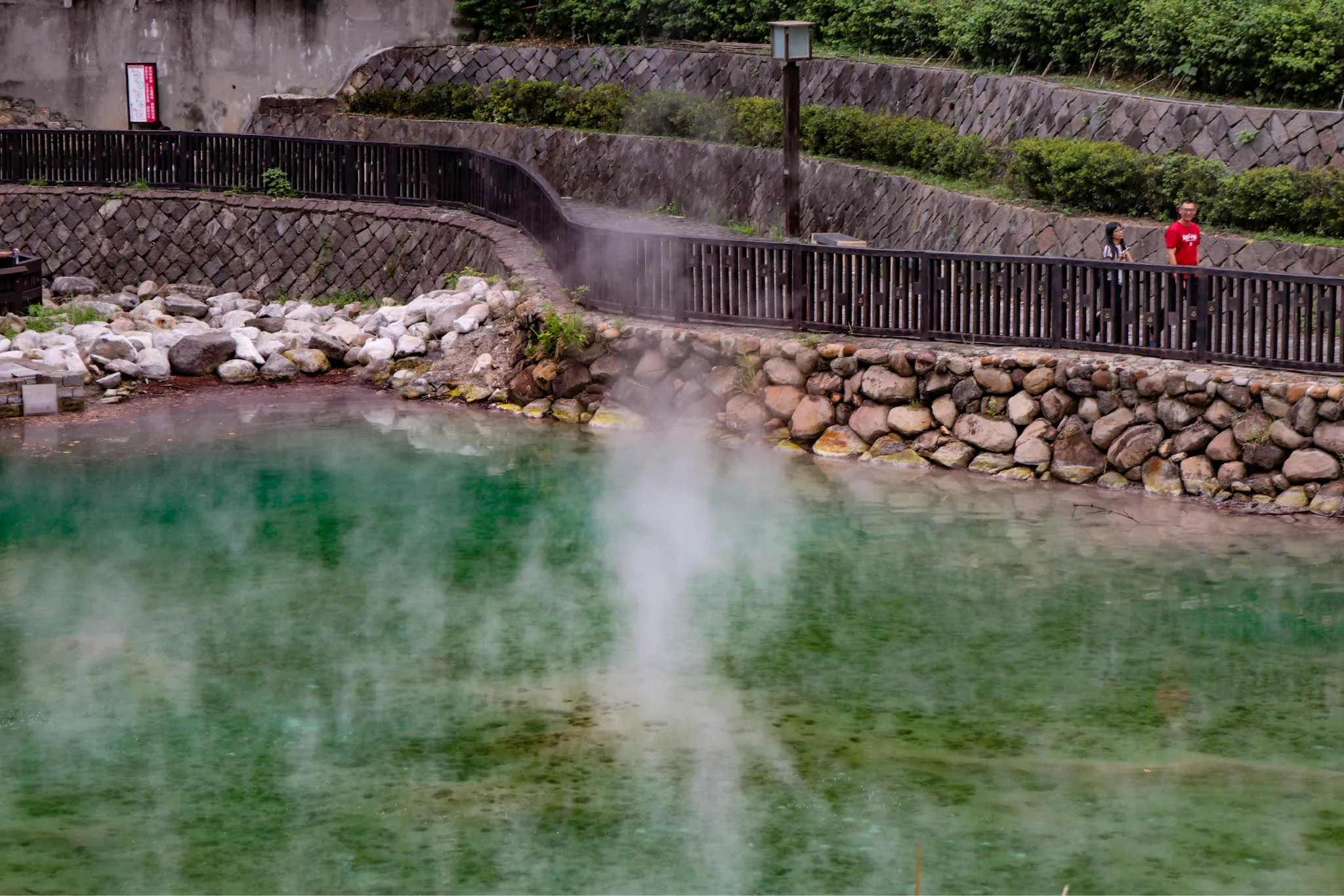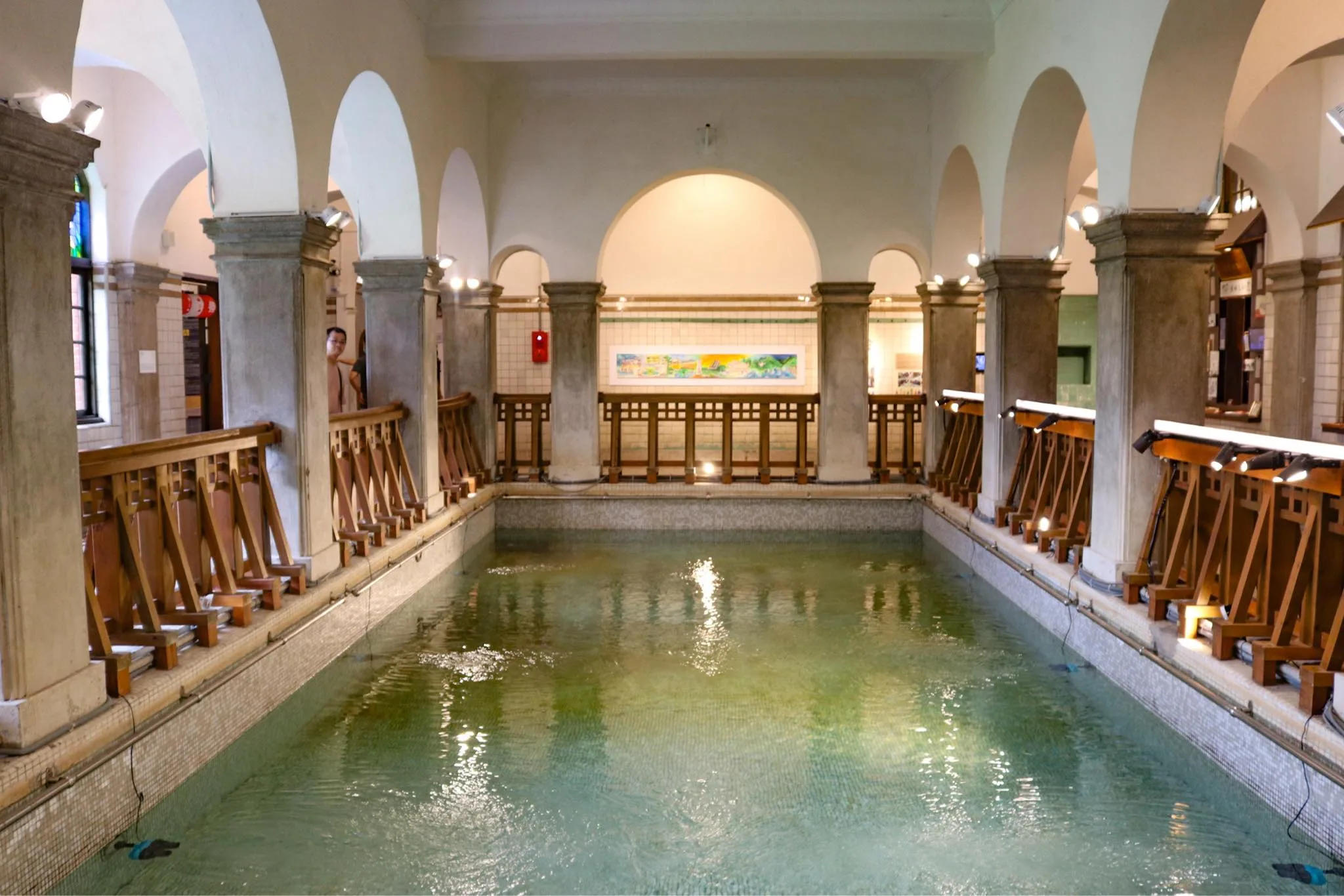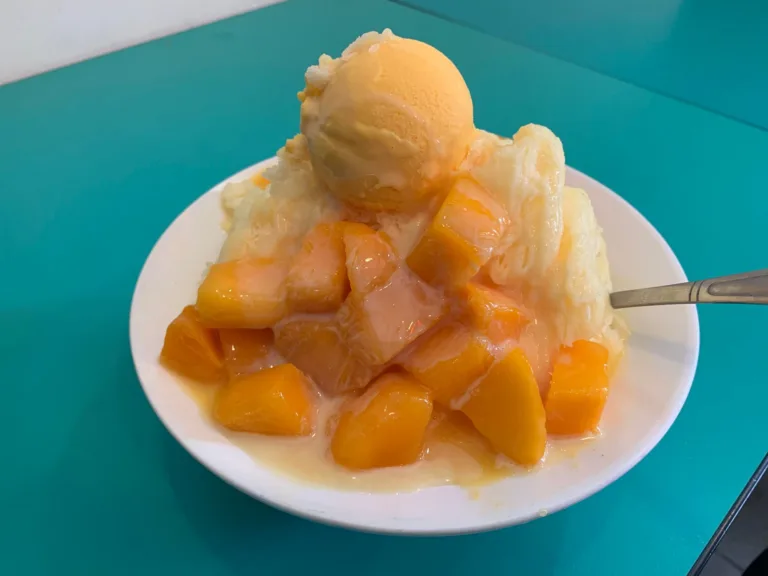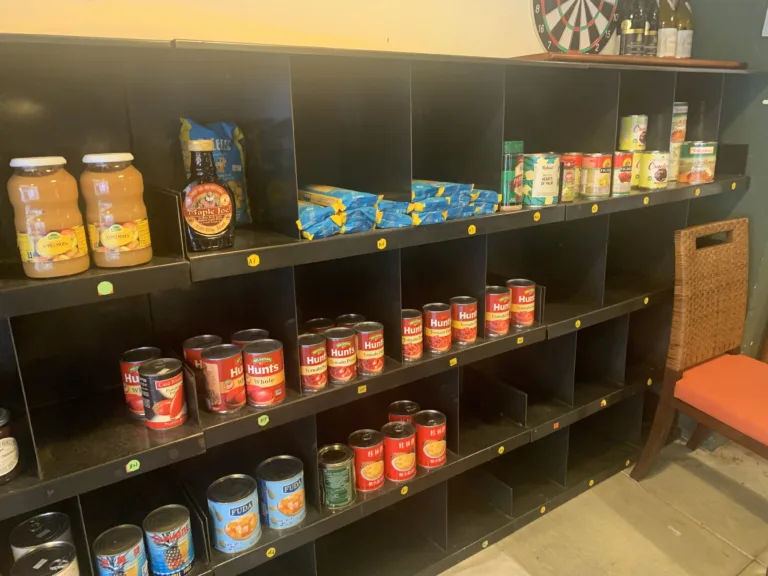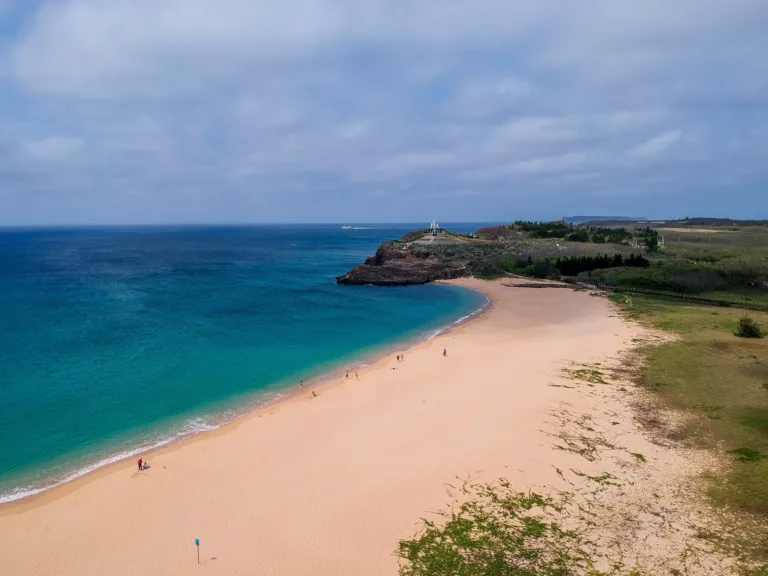Beitou is Taiwan’s Premiere Hot Spring area (北投溫泉). Originally built by the Japanese on natural hot spring water flowing down from Yangmingshan, this area is now springing with hot spring baths, hotels, museums, hikes, restaurants, and more. It is one of the best day trips near Taipei. In this guide, we will tell you how to enjoy this area like a local, and at the same time soak like Japanese royalty.
Historical Background:
Beitou’s hot springs are distributed along the Huangxi Valley, including areas like Shamao Mountain, Datun Volcanic Group, Qixing Mountain volcanic rock layers, and Jinshan Fault in northern Taiwan. These include Thermal Valley Hot Springs, Sulfur Valley Hot Springs, Upper Beitou Hot Springs, Shuangchong Creek Hot Springs (Xingyi Road Hot Springs Area), and Longfeng Valley Hot Springs. The narrow definition of Beitou Hot Springs categorizes the springs by their composition: the geothermal springs of Thermal Valley (green sulfur springs, 50–90°C and highly acidic), the white sulfur springs of Sulfur Valley (pH of 3–5 and a temperature of about 45°C), and iron sulfur springs located in Upper Beitou (eutral carbonate hot springs, with a lower temperature of about 40–60°C).
Historical and Cultural Background
In 1894 during the Qing Dynasty, the first person to establish a hot spring in Beitou was German sulfur merchant Ouely. The following year, Japanese Rear Admiral Tsunoda Hidematsu and Taipei County Secretary Nirei Keiji inspected the hot springs. On November 10, 1895, Governor Kabayama Sukenori also visited, and a public bath area began to form near today’s Beitou Hot Spring Museum.
In 1905 funds were raised to to construct Puji Temple, dedicated to the goddess of hot springs, Kannon, to bless the local hot spring industry. In 1913, a public hot spring bath was established under the direction of the Taipei Prefecture, modeled after the hot springs of Izu in Shizuoka Prefecture, Japan. It cost more than 56,000 yen to build. In the late 1920s, members of the Japanese imperial family, including Prince Asaka Yasuhiko, visited Beitou’s public baths.
In 1954, Beitou became a legally recognized red-light district. The practice was abolished in 1979, and Beitou has since shifted focus to tourism and leisure.
In the 1960s and 1970s, the number of hot spring inns in Beitou peaked, with over 70 inns in operation. However, from 1975 onwards, the industry began to decline due to poor management, lack of public infrastructure, and excessive development.
In 1995, a local movement to save the Beitou Public Bathhouse succeeded, leading to its restoration as the Beitou Hot Spring Museum, which was designated a historic site in 1998. In 1999, the Tourism Bureau declared it the “Year of Beitou Hot Springs,” revitalizing the industry.
Beitou Hot Springs, along with Caoshan, Guanziling, and Sichongxi Hot Springs, was one of the four major hot springs in Taiwan during the Japanese era.
Beitou Hot Springs is a popular tourist attraction, especially with local Taiwanese people and Japanese tourists. The winter is the most popular season.
Hours:
24/7
Activities:
Besides soaking in hot springs, there are many activities available in Beitou such as Rock Climbing, Water Skiing, Kani Kimono Rental, Escape Experience, Beitou Museum, and more on Klook here or KKday here.
Tours:
You can check out tours to Beitou such as a Beitou and Yangmingshan Day Tour, Beitou and Yeliu Day Tour, Beitou and Tamsui Day Tour, Beitou and National Palace Museum Tour, Beitou Muslim Friendly Tour, Beitou Arts and Culture Tour, Flower Season Tour, and more on Klook here or KKday here.
You can also check out the Beitou Fun Package from KKday which includes a one-day transportation coupon, hot spring coupon, and coupon for over 8 souvenir shops in Beitou.
Where to Stay:
Wondering where to stay in the Beitou Hot Spring Area? There are so many hot spring hotels in this area, that it may be hard to choose from.
Best Value for the money:
Spa Spring Resort 水都溫泉會館: (Agoda here or Booking.com here). Price: USD 40-130
Chyuan Du Spring Resort 泉都溫泉會館: (Agoda here or Booking.com here) Price: USD 50 – 150
Middle Tier:
Spring City Resort 春天酒店: (Agoda here or Booking.com here) Price: USD 100 – 300
Asia Pacific Hotel Beitou 亞太飯店: (Agoda here or Trip.com here) Price: USD 200 – 500
High End:
Radium Kagaya International日勝生加賀屋國際溫泉飯店: (Agoda here or Booking.com here) Price: USD 300 – 800
Wellsping Silks Beitou 北投晶泉丰旅: (Trip.com or Booking.com here) Price: USD 300 – 1000
There are many more hotels to choose from in Beitou. You can check out our full Beitou Hotel Guide here or search on Agoda here or Booking.com here.
How to get there:
By MRT:
Take the MRT to Xinbeitou MRT station. From there you can also take the S9 or S26 bus further up the mountain if needed. You can book tickets to travel to Taipei via inter-city bus on Klook here.
By Car/Scooter:
From downtown Taipei, take Provincial Highway 2 north to New Beitou MRT Station. Many of the hotels here provide free parking for guests. Looking for scooter rental in Taipei? Check out Klook here, or KKday here to search for options. You can also check out our scooter rental guide here.
If you are looking for car rentals, you can also search Qeeq here, Klook here, or KKday here. You can also check out our car rental guide here.
By Bicycle:
Cycling is the best way to enjoy Taiwan’s landscapes if you have the time and energy. Looking for bicycle rentals in Taiwan? You can use Taiwan’s many Youbike sharing stations, or search for rentals on KKday here, and search for tours on Klook here. You can also check out our Taiwan cycling guide here.
Map:
Please see a list of places we will cover in the map below:

